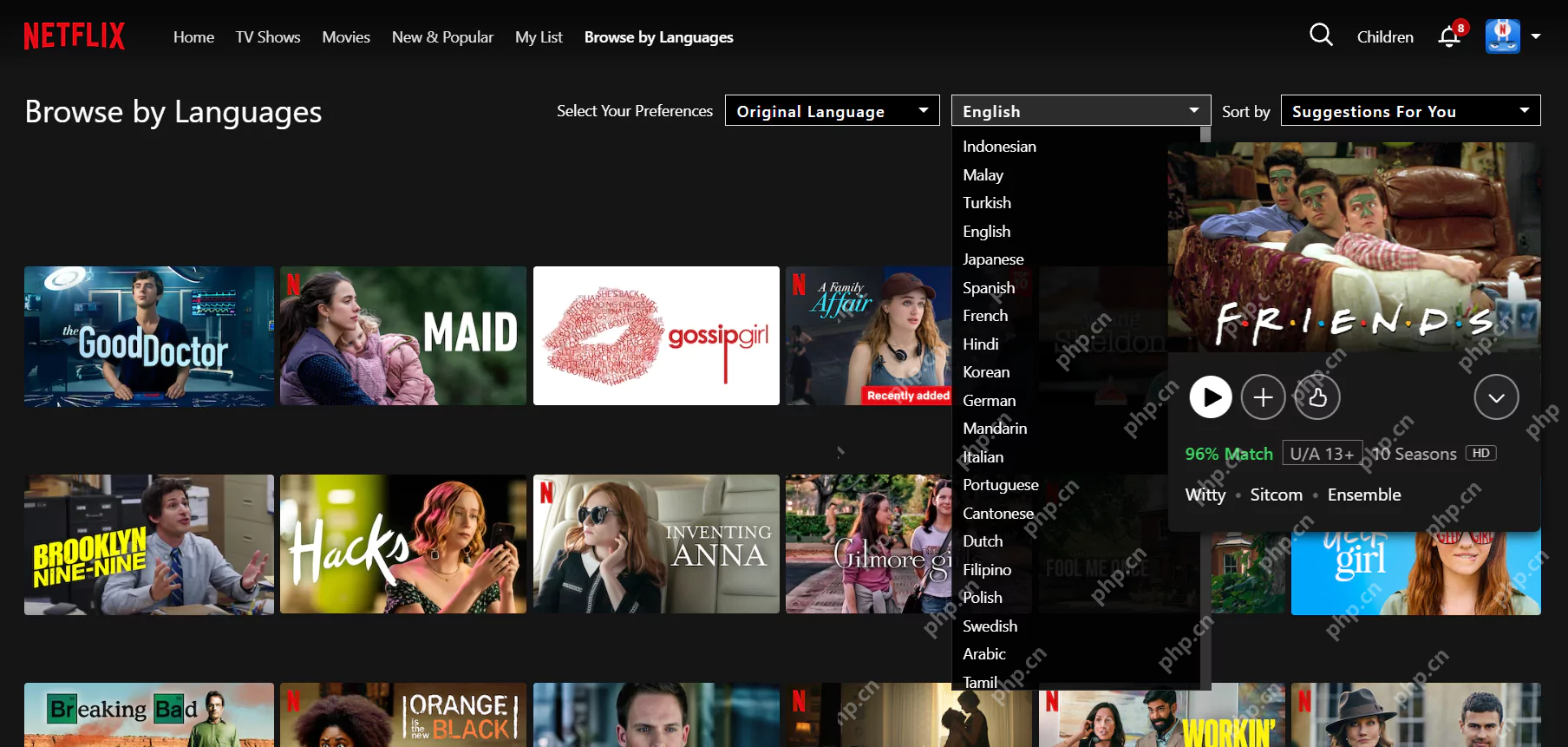How Netflix Uses Data Science? - Analytics Vidhya
Netflix's Data Science: How Your Binge-Watching Fuels Their Algorithms
Ever noticed how Netflix recommendations seem eerily accurate after a weekend K-drama marathon? That's no accident. This article explores how Netflix leverages data science to keep you hooked, turning your viewing habits into a science project for their team. While complex, the core principles are easily understood, even for those with a basic computer science background.
This article reveals how Netflix uses data science to boost viewer engagement, employing AI, data science, and machine learning to analyze user behavior, refine recommendations, and optimize content delivery. We'll also examine the crucial role of data analytics in shaping personalized viewing experiences.

Key Applications of Netflix's Data Science:
- Personalized Recommendations: Netflix's recommendation engine, a prime example of data science in action, uses viewing history and interaction data to predict your next watch.
- Dynamic Thumbnails: Even the thumbnails are personalized! A/B testing and computer vision analyze which visuals resonate most with different user segments.
- Seamless Streaming: Adaptive bitrate streaming and predictive analytics ensure buffer-free viewing, even with fluctuating internet speeds.
- Global Content Strategy: Data analytics informs content acquisition and production, ensuring diverse programming appeals to a worldwide audience.
- Machine Learning Optimization: Algorithms continuously learn from user interactions, refining recommendations over time.
- Ethical Data Handling: Netflix balances personalized experiences with responsible data practices and user privacy considerations.
Table of Contents:
- Personalized Recommendations
- The Power of Personalized Thumbnails
- Ensuring Seamless Streaming: Preloading & Adaptive Bitrate
- Catering to Global Tastes
- The Role of Machine Learning
- The Synergy of AI and Human Expertise
- Ethical Considerations and the Future of Data at Netflix
- Conclusion
- Frequently Asked Questions
Personalized Recommendations: A Deep Dive
Netflix's recommendation system is data-driven, analyzing:
- Viewing History: What you've watched.
- Viewing Context: When and how you watched.
- Interaction Data: Ratings, pauses, skips, etc.
This raw data fuels the creation of various features:
- Temporal Features: Time of day, day of week, seasonality.
- Device Features: Device type, screen resolution, internet speed.
- Engagement Features: Completion rates, re-watches, skip rates.
This detailed analysis allows for highly targeted suggestions, increasing the likelihood of finding your next favorite show. For example, after finishing "The Crown," expect recommendations similar to "Bridgerton"—a reflection of your apparent preference for historical dramas.

Thumbnail Magic: The Art of the Visual Cue
Netflix personalizes even the thumbnails, using:
- Data Collection: Tracking which thumbnails users click.
- Feature Extraction: Employing computer vision to identify key elements in each frame (faces, scenes, actions).
- A/B Testing: Comparing different thumbnails to determine which versions are most effective for specific user groups.
This ensures that the visual representation itself is tailored to maximize click-through rates, further enhancing the personalization experience.
(Continue with the remaining sections, adapting the text similarly to maintain the original meaning while changing the wording and sentence structure. Remember to keep the image placement identical.)
The above is the detailed content of How Netflix Uses Data Science? - Analytics Vidhya. For more information, please follow other related articles on the PHP Chinese website!

Hot AI Tools

Undresser.AI Undress
AI-powered app for creating realistic nude photos

AI Clothes Remover
Online AI tool for removing clothes from photos.

Undress AI Tool
Undress images for free

Clothoff.io
AI clothes remover

Video Face Swap
Swap faces in any video effortlessly with our completely free AI face swap tool!

Hot Article

Hot Tools

Notepad++7.3.1
Easy-to-use and free code editor

SublimeText3 Chinese version
Chinese version, very easy to use

Zend Studio 13.0.1
Powerful PHP integrated development environment

Dreamweaver CS6
Visual web development tools

SublimeText3 Mac version
God-level code editing software (SublimeText3)

Hot Topics
 1669
1669
 14
14
 1428
1428
 52
52
 1329
1329
 25
25
 1273
1273
 29
29
 1256
1256
 24
24
 How to Build MultiModal AI Agents Using Agno Framework?
Apr 23, 2025 am 11:30 AM
How to Build MultiModal AI Agents Using Agno Framework?
Apr 23, 2025 am 11:30 AM
While working on Agentic AI, developers often find themselves navigating the trade-offs between speed, flexibility, and resource efficiency. I have been exploring the Agentic AI framework and came across Agno (earlier it was Phi-
 How to Add a Column in SQL? - Analytics Vidhya
Apr 17, 2025 am 11:43 AM
How to Add a Column in SQL? - Analytics Vidhya
Apr 17, 2025 am 11:43 AM
SQL's ALTER TABLE Statement: Dynamically Adding Columns to Your Database In data management, SQL's adaptability is crucial. Need to adjust your database structure on the fly? The ALTER TABLE statement is your solution. This guide details adding colu
 Beyond The Llama Drama: 4 New Benchmarks For Large Language Models
Apr 14, 2025 am 11:09 AM
Beyond The Llama Drama: 4 New Benchmarks For Large Language Models
Apr 14, 2025 am 11:09 AM
Troubled Benchmarks: A Llama Case Study In early April 2025, Meta unveiled its Llama 4 suite of models, boasting impressive performance metrics that positioned them favorably against competitors like GPT-4o and Claude 3.5 Sonnet. Central to the launc
 OpenAI Shifts Focus With GPT-4.1, Prioritizes Coding And Cost Efficiency
Apr 16, 2025 am 11:37 AM
OpenAI Shifts Focus With GPT-4.1, Prioritizes Coding And Cost Efficiency
Apr 16, 2025 am 11:37 AM
The release includes three distinct models, GPT-4.1, GPT-4.1 mini and GPT-4.1 nano, signaling a move toward task-specific optimizations within the large language model landscape. These models are not immediately replacing user-facing interfaces like
 How ADHD Games, Health Tools & AI Chatbots Are Transforming Global Health
Apr 14, 2025 am 11:27 AM
How ADHD Games, Health Tools & AI Chatbots Are Transforming Global Health
Apr 14, 2025 am 11:27 AM
Can a video game ease anxiety, build focus, or support a child with ADHD? As healthcare challenges surge globally — especially among youth — innovators are turning to an unlikely tool: video games. Now one of the world’s largest entertainment indus
 New Short Course on Embedding Models by Andrew Ng
Apr 15, 2025 am 11:32 AM
New Short Course on Embedding Models by Andrew Ng
Apr 15, 2025 am 11:32 AM
Unlock the Power of Embedding Models: A Deep Dive into Andrew Ng's New Course Imagine a future where machines understand and respond to your questions with perfect accuracy. This isn't science fiction; thanks to advancements in AI, it's becoming a r
 Rocket Launch Simulation and Analysis using RocketPy - Analytics Vidhya
Apr 19, 2025 am 11:12 AM
Rocket Launch Simulation and Analysis using RocketPy - Analytics Vidhya
Apr 19, 2025 am 11:12 AM
Simulate Rocket Launches with RocketPy: A Comprehensive Guide This article guides you through simulating high-power rocket launches using RocketPy, a powerful Python library. We'll cover everything from defining rocket components to analyzing simula
 Google Unveils The Most Comprehensive Agent Strategy At Cloud Next 2025
Apr 15, 2025 am 11:14 AM
Google Unveils The Most Comprehensive Agent Strategy At Cloud Next 2025
Apr 15, 2025 am 11:14 AM
Gemini as the Foundation of Google’s AI Strategy Gemini is the cornerstone of Google’s AI agent strategy, leveraging its advanced multimodal capabilities to process and generate responses across text, images, audio, video and code. Developed by DeepM




